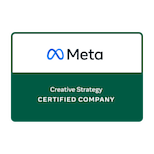Are you leveraging your database to its fullest potential?
As an organization that was founded to raise money to cure cancer, the focus is often dialed in on event planning, direct marketing, donor stewardship (and it should be!). But is there also an organizational awareness of the way that your database is managed?
Your database of donors and prospective donors is the very foundation on which all of your fundraising efforts are built. It is the gateway through which you keep the conversation going with your constituency, as well as the tool you need for analysis and keeping your thumb on the health of your program. If you don’t have reliable and secure data, or the ability to slice and dice targeted audiences of people who are willing to donate to the cause, then you are missing out on huge potential.
Three key philosophies to consider when thinking about data:
Segmentation. As your database grows, it’s important to think ahead and have flags attributed to each constituent that make sense. Can you put your fingers on a file of donors who gave to a specific appeal number last year? Or whose first gift date was between 365 – 455 days ago? Did you know that you could see a 600% lift in response rate when you pull out those donors who gave to the same mailing last year and acknowledge them in the copy? And even more exciting is when it makes sense to begin exploring audience segmentation with algorithmic modeling. Sampling certain behavior or attributes of active donors and finding look-alike audiences to target second gift conversion or upgrade potential within your own existing pool of prospects.
Scrubbing. Data hygiene is crucial. But it’s also tedious and therefore sometimes overlooked as a priority. Poor data management could lead to alienated constituents and sometimes lead to an overall negative public perception of the cancer center. We have seen cases where an organization didn’t know that patients weren’t being flagged as such in the database and mothers of pediatric cancer patients received a fundraising appeal that was interpreted as incredibly insensitive. We have also received data that was poorly exported, and thousands of constituents were duplicated in the mail files (luckily, this was caught by our Donlon Agency Operations Team and we saved this client money and potential donor calls – never mind the potential hit to retention rate that was avoided). Think about having internal conversations around how sensitive audiences are handled, how donors move around the database as they upgrade or give to multiple channels, and even prioritization of audiences and exclusions to consider during data pulls.
Security. It’s all over the news, and it’s all the time. Data breaches are a way of life in this new technological age. And as healthcare organizations under the data security requirements of HIPAA, there is significantly greater pressure to hold data precious and protect it from intrusion. We take it very seriously too, and choose data transfer methods for our clients that meet all of the same security requirements. But are your development officers aware that when they shoot out an email (internally or to a vendor) with a little snippet of sample donor information, depending on email security on both sides of the transmission, that all of those safeguards could be thrown out the window? Make efforts to keep data security at the forefront of everyone’s mind anytime the database is accessed.
We have a responsibility to be calculating and logical about the way our data is managed. Using sound historical data paired with an emotional message will drive better results and lead to eradicating cancer faster.











